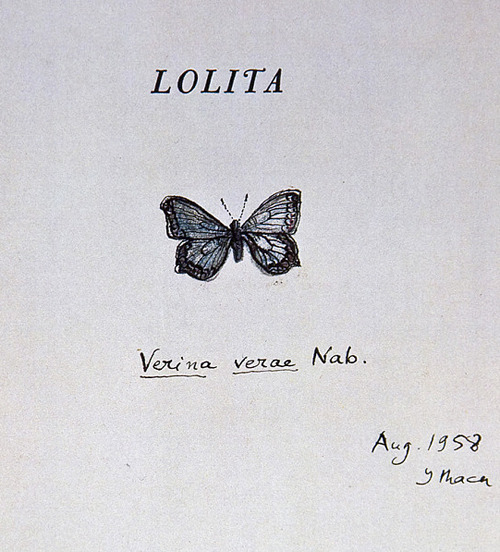| "Blauwe spinner". The body of this butterflyis made of thread (w:18 h:50 d:5.5 cm) |
| "De draadspanner". A construction of a butterfly wing with thread and pins (w:17 h:14 d:5.5 cm) |
| "Zwart vlek vlinder". With two upper embroidered wings (w:17 h:14 d:5.5 cm) |
| "Landkaart". The wings are partly made from maps where the butterfly originated. (w:26 h:20 d:5.5 cm) |
Anne Ten Donkelaar is a Dutch visual artist who lives in Utrecht. In her 2011 work "Broken butterflies," she presents butterlies repaired with new wings and bodies.
 |
Rose SandersonZygaena Kappadokiae, acrylic on book cover |
 |
Rose SandersonPapilio Glaucus, acrylic on book cover |
Rose Sanderson is a Bristol based artist. "Current work focuses predominantly on the fragility of life, bringing to light many issues to do with human understanding. The object of death is seen not as a morbid obsession created to shock or offend but as an appreciation of what once was: to honour and celebrate its existence. Expressive backgrounds that give a feeling of decay (peeling layers of wallpaper, cracked surfaces, aged and 'distressed') are combined with fine attention to detail in the subject matter." Bo lee Gallery
 |
| A butterfly drawn by Nabokov in a book given to his wife, Vera. |
 |
| Hand-illustrated butterfly by Nabokov on a copy of Lolita. |
Poem in Russian ("Kak lyubil ya stikhi Gumilyova!").
Written July 22, 1972.
HOW I loved the poems of Gumilyov!
Reread them I cannot,
But traces have stayed in my mind,
such as, on this think-through:
Reread them I cannot,
But traces have stayed in my mind,
such as, on this think-through:
"... And I will die not in a summerhouse
from gluttony and heat,
but with a heavenly butterfly in my net
on the summit of some wild hill."
from gluttony and heat,
but with a heavenly butterfly in my net
on the summit of some wild hill."
A Job for Eternity
From "Prof. Woodbridge in an Essay on
Nature Postulates the Reality of the World"
Review of Frederick J. E. Woodbridge,
An Essay on Nature (1940).
THAT philosophers are essentially diurnal creatures (no matter how late into the night their inkpots and spectacles glitter) and that space would not be space if color and outline were not primarily perceived are suppositions that transcend the author's "naïve realism" just at the point where he seems to be most securely hugging the coast. But is visibility really as dominant as that in all imaginable knowledge of Nature? Though I personally would be satisfied to spend the whole of eternity gazing at a blue hill or a butterfly, I would feel the poorer if I accepted the idea of there not existing still more vivid means of knowing butterflies and hills.
[New York Sun, December 10, 1940]
For all lovers of Nabokov, I strongly recommend the online version of Father's butterflies by the The Atlantic Monthly on line.
Hello Katia,
ReplyDeleteCe post est magnifique!